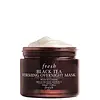What's inside
What's inside
 Key Ingredients
Key Ingredients

 Benefits
Benefits

 Concerns
Concerns

 Ingredients Side-by-side
Ingredients Side-by-side

Glycerin
HumectantWater
Skin ConditioningSodium Hyaluronate
HumectantCaffeine
Skin ConditioningOlivine Extract
Skin ConditioningColloidal Gold
AntimicrobialPentylene Glycol
Skin ConditioningCarbomer
Emulsion StabilisingSodium Hydroxide
BufferingPotassium Sorbate
PreservativeSodium Benzoate
MaskingSodium Metabisulfite
AntioxidantMica
Cosmetic ColorantPhenoxyethanol
PreservativeCI 77480
Cosmetic ColorantCI 77491
Cosmetic ColorantCI 77891
Cosmetic ColorantWater
Skin ConditioningGlycerin
HumectantButylene Glycol
HumectantJojoba Esters
EmollientIsohexadecane
EmollientAmmonium Acryloyldimethyltaurate/Vp Copolymer
Dicaprylyl Carbonate
EmollientCamellia Oleifera Seed Oil
Skin ConditioningPentylene Glycol
Skin ConditioningEthylhexyl Palmitate
EmollientMirabilis Jalapa Extract
Skin ConditioningGlyceryl Stearate
EmollientSteareth-21
CleansingCaprylic/Capric Triglyceride
MaskingDimethicone
EmollientOxidized Corn Oil
Skin ConditioningButyrospermum Parkii Butter
Skin ConditioningCera Alba
EmollientKigelia Africana Fruit Extract
Skin ConditioningSaccharomyces Ferment Filtrate
HumectantCamellia Sinensis Leaf Extract
AntimicrobialRubus Fruticosus Leaf Extract
MaskingLitchi Chinensis Seed Extract
Skin ConditioningRosa Damascena Flower Oil
MaskingSodium Hyaluronate
HumectantAdenosine
Skin ConditioningTocopheryl Acetate
AntioxidantTocopherol
AntioxidantCeteareth-20
CleansingBehenyl Alcohol
EmollientParfum
MaskingCeteareth-12
EmulsifyingCetearyl Alcohol
EmollientSodium Citrate
BufferingSodium Polyacrylate Starch
AbsorbentSodium Polyacrylate
AbsorbentSorbitan Laurate
EmulsifyingDisodium EDTA
Maltodextrin
AbsorbentSilica
AbrasiveTetrasodium EDTA
Hydroxyethylcellulose
Emulsion StabilisingAcetyl Dipeptide-1 Cetyl Ester
Skin ConditioningCitric Acid
BufferingCI 77891
Cosmetic ColorantBHT
AntioxidantPotassium Sorbate
PreservativeBiotin
AntiseborrhoeicPhenoxyethanol
PreservativeLinalool
PerfumingCitronellol
PerfumingGeraniol
PerfumingWater, Glycerin, Butylene Glycol, Jojoba Esters, Isohexadecane, Ammonium Acryloyldimethyltaurate/Vp Copolymer, Dicaprylyl Carbonate, Camellia Oleifera Seed Oil, Pentylene Glycol, Ethylhexyl Palmitate, Mirabilis Jalapa Extract, Glyceryl Stearate, Steareth-21, Caprylic/Capric Triglyceride, Dimethicone, Oxidized Corn Oil, Butyrospermum Parkii Butter, Cera Alba, Kigelia Africana Fruit Extract, Saccharomyces Ferment Filtrate, Camellia Sinensis Leaf Extract, Rubus Fruticosus Leaf Extract, Litchi Chinensis Seed Extract, Rosa Damascena Flower Oil, Sodium Hyaluronate, Adenosine, Tocopheryl Acetate, Tocopherol, Ceteareth-20, Behenyl Alcohol, Parfum, Ceteareth-12, Cetearyl Alcohol, Sodium Citrate, Sodium Polyacrylate Starch, Sodium Polyacrylate, Sorbitan Laurate, Disodium EDTA, Maltodextrin, Silica, Tetrasodium EDTA, Hydroxyethylcellulose, Acetyl Dipeptide-1 Cetyl Ester, Citric Acid, CI 77891, BHT, Potassium Sorbate, Biotin, Phenoxyethanol, Linalool, Citronellol, Geraniol
 Reviews
Reviews

Ingredients Explained
These ingredients are found in both products.
Ingredients higher up in an ingredient list are typically present in a larger amount.
Ci 77891 is a white pigment from Titanium dioxide. It is naturally found in minerals such as rutile and ilmenite.
It's main function is to add a white color to cosmetics. It can also be mixed with other colors to create different shades.
Ci 77891 is commonly found in sunscreens due to its ability to block UV rays.
Learn more about CI 77891Glycerin is already naturally found in your skin. It helps moisturize and protect your skin.
A study from 2016 found glycerin to be more effective as a humectant than AHAs and hyaluronic acid.
As a humectant, it helps the skin stay hydrated by pulling moisture to your skin. The low molecular weight of glycerin allows it to pull moisture into the deeper layers of your skin.
Hydrated skin improves your skin barrier; Your skin barrier helps protect against irritants and bacteria.
Glycerin has also been found to have antimicrobial and antiviral properties. Due to these properties, glycerin is often used in wound and burn treatments.
In cosmetics, glycerin is usually derived from plants such as soybean or palm. However, it can also be sourced from animals, such as tallow or animal fat.
This ingredient is organic, colorless, odorless, and non-toxic.
Glycerin is the name for this ingredient in American English. British English uses Glycerol/Glycerine.
Learn more about GlycerinPentylene glycol is typically used within a product to thicken it. It also adds a smooth, soft, and moisturizing feel to the product. It is naturally found in plants such as sugar beets.
The hydrophilic trait of Pentylene Glycol makes it a humectant. As a humectant, Pentylene Glycol helps draw moisture from the air to your skin. This can help keep your skin hydrated.
This property also makes Pentylene Glycol a great texture enhancer. It can also help thicken or stabilize a product.
Pentylene Glycol also acts as a mild preservative and helps to keep a product microbe-free.
Some people may experience mild eye and skin irritation from Pentylene Glycol. We always recommend speaking with a professional about using this ingredient in your routine.
Pentylene Glycol has a low molecular weight and is part of the 1,2-glycol family.
Learn more about Pentylene GlycolPhenoxyethanol is a preservative that has germicide, antimicrobial, and aromatic properties. Studies show that phenoxyethanol can prevent microbial growth. By itself, it has a scent that is similar to that of a rose.
It's often used in formulations along with Caprylyl Glycol to preserve the shelf life of products.
Potassium Sorbate is a preservative used to prevent yeast and mold in products. It is commonly found in both cosmetic and food products.
This ingredient comes from potassium salt derived from sorbic acid. Sorbic acid is a natural antibiotic and effective against fungus.
Both potassium sorbate and sorbic acid can be found in baked goods, cheeses, dried meats, dried fruit, ice cream, pickles, wine, yogurt, and more.
You'll often find this ingredient used with other preservatives.
Learn more about Potassium SorbateSodium Hyaluronate is hyaluronic acid's salt form. It is commonly derived from the sodium salt of hyaluronic acid.
Like hyaluronic acid, it is great at holding water and acts as a humectant. This makes it a great skin hydrating ingredient.
Sodium Hyaluronate is naturally occurring in our bodies and is mostly found in eye fluid and joints.
These are some other common types of Hyaluronic Acid:
Learn more about Sodium HyaluronateWater. It's the most common cosmetic ingredient of all. You'll usually see it at the top of ingredient lists, meaning that it makes up the largest part of the product.
So why is it so popular? Water most often acts as a solvent - this means that it helps dissolve other ingredients into the formulation.
You'll also recognize water as that liquid we all need to stay alive. If you see this, drink a glass of water. Stay hydrated!
Learn more about Water